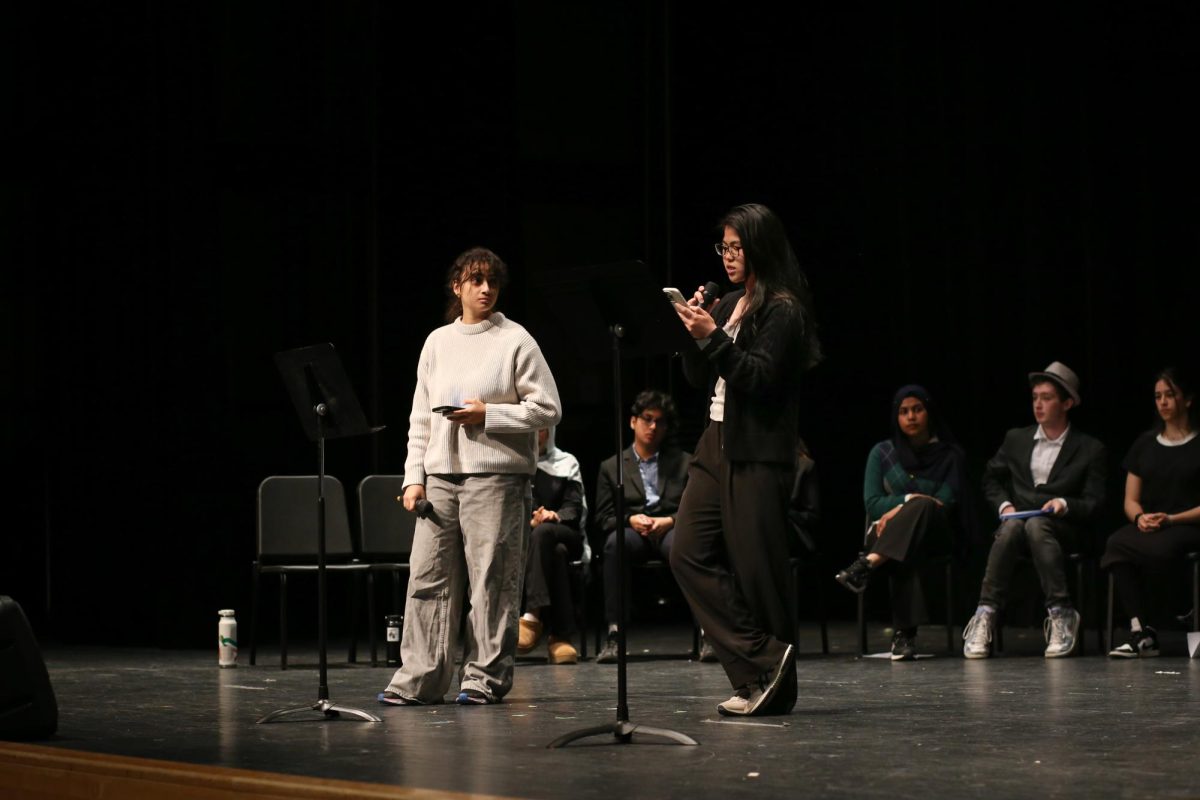
In preparation for 2024-2025 college applications, juniors were given the annual opportunity to sit for a free SAT during the school day. With standardized-test policies changing over the past couple of years, news of prestigious universities like Yale, Brown, and Dartmouth reversing their test-optional guidelines has students rushing to earn strong scores. With College Board’s new approach toward secured, convenient testing online, juniors took the digital version of the SAT for the first time this year at Townsend Harris High School.
In the days leading up to the exam, students received emails from the school regarding preparation for the exam. The emails include links to the Methodize website, which provides lessons and practice problems similar to the digital SAT.
The new SAT format supplies testers with tools to bridge the gap between the in-person experience and the online exam. According to College Board, this includes a built-in digital calculator and reference sheet for the Math section and an annotation tool to highlight texts and leave notes for the Reading and Writing section.
This past fall season, the testing coordination team held a trial run for the new SAT. ISS testing coordinator Katherine Gelbman said, “[We made] sure students [were] able to log in on their accounts successfully so that way students don’t have issues on test day.”
This digitized format allows students to use their personal devices for this exam. To aid in the process, a week before it was administered, senior volunteers were recruited to ‘test check’ student devices during bands five through eight at a table in front of the cafeteria.
“We helped students download the College Board test app, Bluebook, and make sure that they [were] able to log in. We [did not] run into any problems except for long loading screens,” said senior Jenna Sarju. Following this, volunteers gave each device a sticker that verified it was ready for SAT day.
Many juniors believed that the new version was more challenging than the original format.
“The question difficulty-level changes based on how well you do in the first half,” said junior Katie Chan, “which is something we’re not used to at all.” This “half” refers to the two modules that the Reading and Writing and Math sections are split into; the first module consists of questions of varying difficulty levels to determine the student’s unique second module.
Referencing the varying difficulties of questions based on student performance, junior Brandon Tsao said, “I think that the change in the SAT from pen and paper to digital was unnecessary.”
Other students believe that the new format works better for their testing style.
“I feel like [the new test is] more convenient since there are no more long passages to read for the English section,” said junior Uttam Nath. Now, the questions in the English section combined reading and writing,featuring new question types based on short paragraphs as opposed to text-dense passages.
“Though it could be due to a skill issue, I think that going forward, practice SATs should be improved upon since they aren’t in line with the difficulty-changing modules,” said junior Daisy Zheng. The College Board provides six digital practice tests, but these do not include the adaptive test structure and give every student the same question set.
On test day, there was a lack of devices, which led to a number of students being sent home without taking the exam.
Assistant Principal of Organization and testing coordinator Ellen Fee said, “We didn’t know how many students would bring devices of their own. So we didn’t know if we had enough devices until the morning of the exam.” Meanwhile, students who had devices had to wait until teachers did their own “check-ins,” which was “time-consuming.”
Students who were unable to take the test had to reschedule their SAT date. Most students took it on March 22. Others are expected to take it April 5.
Ms. Fee said, “This spring, we have purchased 72 more Chromebooks and we plan to purchase more in the fall, so we should have enough devices next year.”
Juniors reported that the digital version was easier to navigate through with some difficulties specifically regarding the second module of the math section.
Junior Sehajpreet Gill said, “Overall, I prefer the digital SAT due to its numerous features and shorter readings which keep my focus more than larger passages.”
Junior Sahir Sadat said, “I don’t think my overall experience needed much improvement…I did find some math questions difficult [which forced] me to spend a lot more time than normal.”
Senior Ilana Allen said, “With the College Board choosing to go digital I think the SAT has lost the credibility it had left. We need to keep paper and pencil tests in our education system as it allows people to not be distracted by various things.”



























